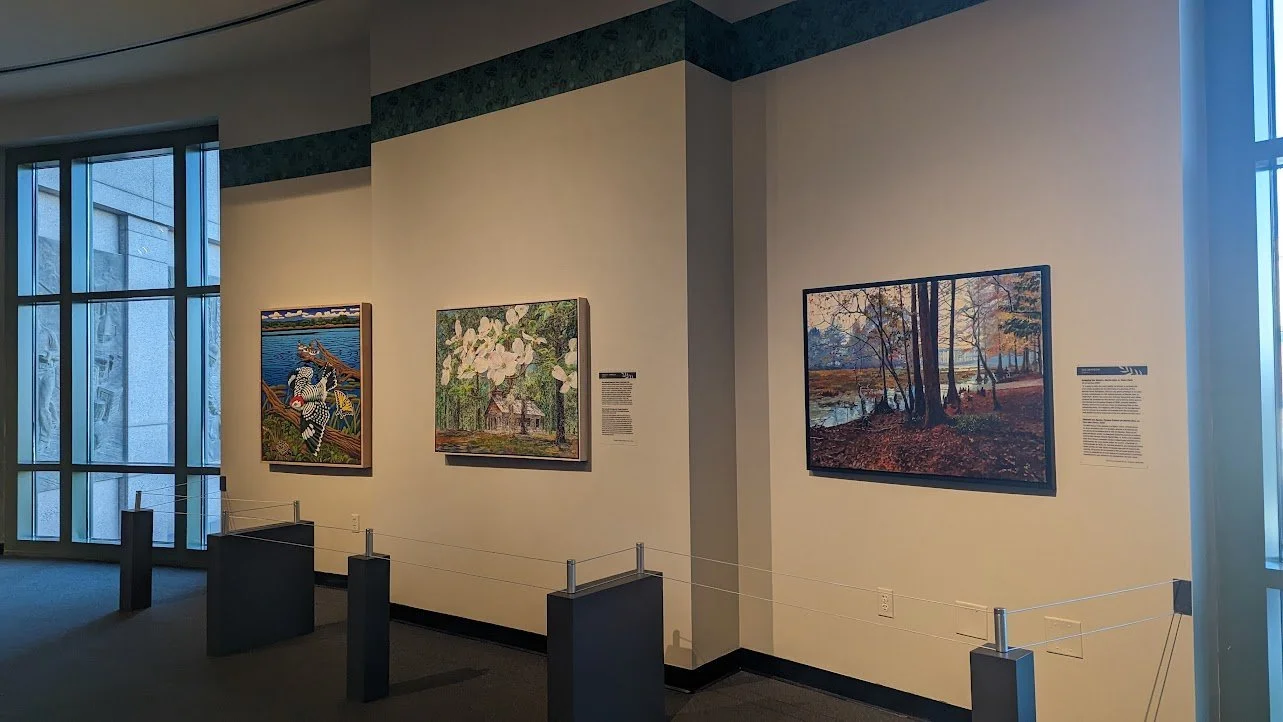Growing up in South Korea, I began painting on and off at the age of seven. Art has always been an integral part of my life. After immigrating to the United States in 1997, I began painting watercolors earnestly from 2011. Right from the beginning, I sought to develop my own style, incorporating eastern art elements into my work. I used sumi ink to draw lines and watercolors for painting, but discovering watercolor batik in 2012 opened new possibilities for my artistic journey.
Watercolor batik involves painting on thin rice paper. After experimenting with various papers from different countries, I discovered that textured mulberry paper was my favorite. Made from the inner bark of mulberry fibers, this paper offers a range of textures that resemble the patterns found in nature. Through years of experimentation, I refined my technique to utilize optical color mixing. My paintings offer a viewing experience, where images appear as intended from a distance, yet reveal playful bursts of vibrant colors upon closer inspection. By layering vibrant hues over a soft wet-in-wet wash, I create a watercolor-like effect. Additionally, alternating layers of watercolor wash and wax create captivating shapes and colors, reminiscent of impressionism while adding a delightful depth to the pieces.
As I explored further, experimenting with shapes, colors, and organic lines, I naturally ventured into abstract watercolor batik painting. While working with wax layers, I noticed that wax drips and edges weren’t straight, and I began to embrace the beauty of imperfection. This approach resonated with the Japanese philosophy of Wabi-sabi, which celebrates the beauty of the imperfect and incomplete. I enjoyed allowing free-form calligraphic lines and shapes to emerge while infusing my emotions and feelings into the colors, letting them interplay on the paper. While creating Wabi-sabi-inspired abstract works, my love of vibrant colors led my abstracts to develop their own distinctive, colorful style.
As my paintings and art supplies began to overflow our small house, my family decided to move to a larger home with a spacious studio in 2018. Living near a public park, I found joy in walking its trails and soon began exploring other nearby parks. When the 2020 pandemic hit, visiting these parks provided a much-needed sense of peace and relief from the isolation. This deepened my desire to capture their natural beauty through painting. Each moment spent in nature leaves a lasting impression, creating cherished memories. Whether working from photographs or personal recollections, I carefully select elements that resonate with me, weaving them into artworks that hold deep personal significance.
My batik paintings are influenced by Asian art, particularly Korean oriental painting and Japanese woodblock prints, where landscapes and objects are simplified, and colors are vibrant yet flat. Nature is often stylized with repetitive patterns, a characteristic that viewers may also recognize in my watercolor batik paintings. Additionally, I often incorporate negative and pouring painting techniques from Western art. My goal is to offer a fresh perspective on beauty by depicting landscapes that blend Eastern and Western interpretations into a unified expression.
My current body of work focuses on capturing the essence of Texas landscapes, with their vibrant flora and fauna. I am intrigued by the variety of colors and geological features, from wildflower fields to vast canyons. I paint to highlight the beauty of these places and to share the joy found in our connection with nature.
In 2019, I was honored to be one of 30 Texas artists selected for the Art of Texas Parks project and recognized as a 'Centennial Painter' by the Texas Parks and Wildlife Department. The paintings I created for the project have been exhibited in museums, including the Bullock Museum in Austin and the Museum of Natural Science in Houston.
"View Beyond Dogwood, Mission Tejas State Park" (2nd from the right) at the Bullock Museum in Austin.
"View Beyond Dogwood, Mission Tejas State Park" (2nd from the right) at the Museum of Natural Science in Houston, TX.


